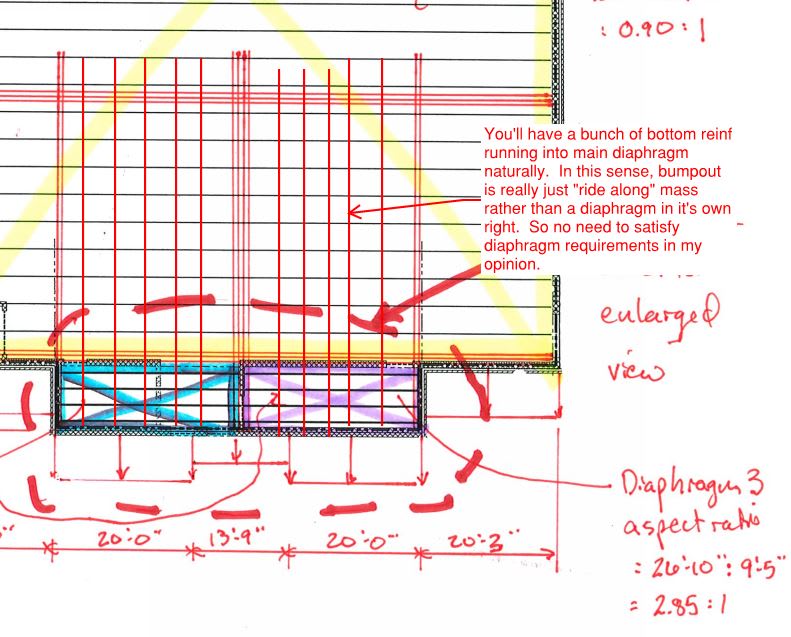zrck99
Structural
- Dec 19, 2014
- 82
I am designing a middle school gymnasium storm shelter using 6" total thickness non-composite concrete slab over 1.5" form deck. I've read through the diaphragm sections of ACI 318 and saw the 3:1 aspect ratio requirement for considering the diaphragm rigid. For simplicity sake, I would like to analyze the full shelter as rigid in order to avoid putting together a computer model. With this being a storm shelter in a school, the Calculation Review process is pretty involved so I want to make sure that I have code backing for my analysis.
In the attached pdf, I've shown with highlighter what I'm considering my separate diaphragms for loading in each direction. In order to meet the 3:1 aspect ratio, I've broken the southern 9'-5" x 53'-9" bumpout as two separate diaphragms with each meeting the 3:1 aspect ratio requirement. So the question is, is this an acceptable way of analyzing my scenario? Is there any reason that I can't break the lower section into two separate rigid diaphragms as shown?
I am still getting familiar with the full code provisions for rigid vs semi-rigid so please feel free to point out anything that you think would be of value.
Thanks
In the attached pdf, I've shown with highlighter what I'm considering my separate diaphragms for loading in each direction. In order to meet the 3:1 aspect ratio, I've broken the southern 9'-5" x 53'-9" bumpout as two separate diaphragms with each meeting the 3:1 aspect ratio requirement. So the question is, is this an acceptable way of analyzing my scenario? Is there any reason that I can't break the lower section into two separate rigid diaphragms as shown?
I am still getting familiar with the full code provisions for rigid vs semi-rigid so please feel free to point out anything that you think would be of value.
Thanks

